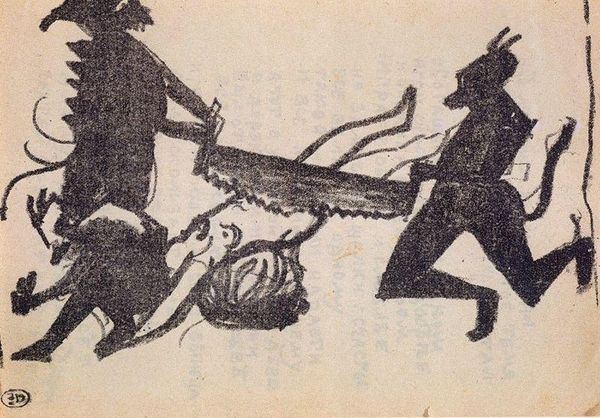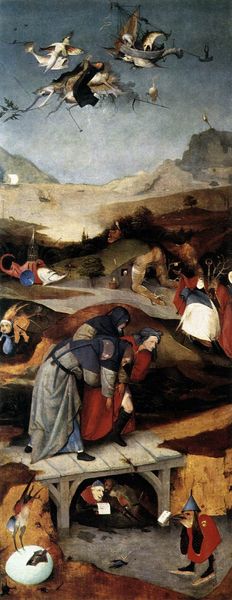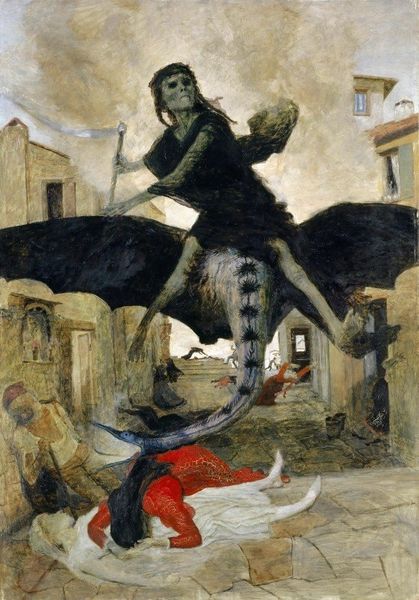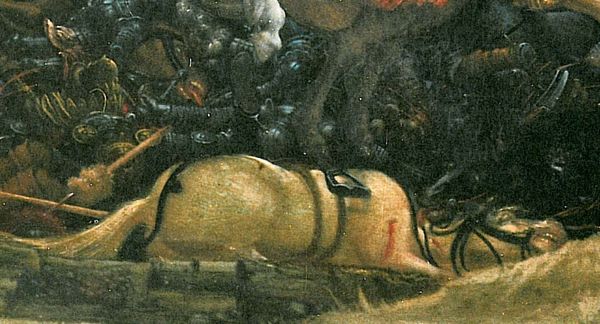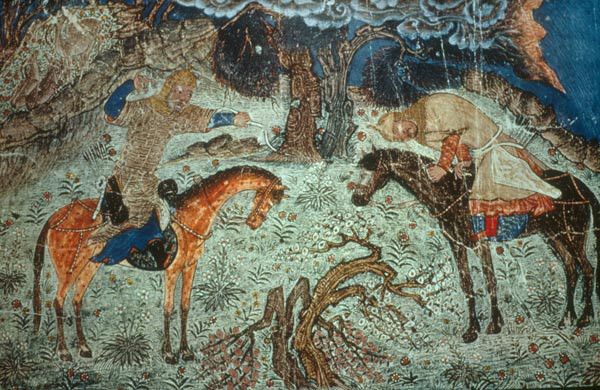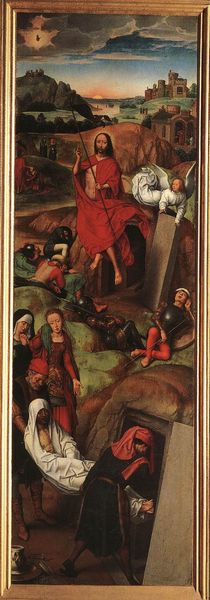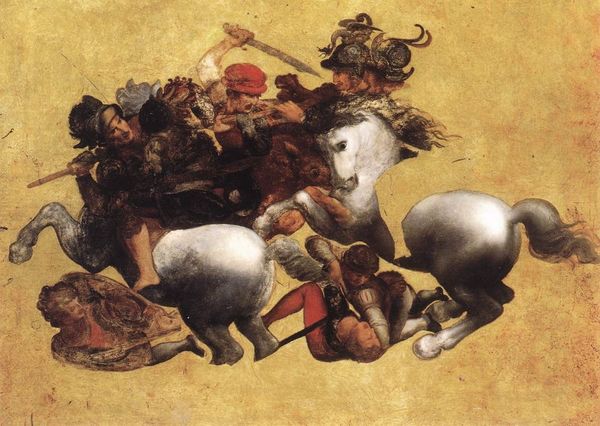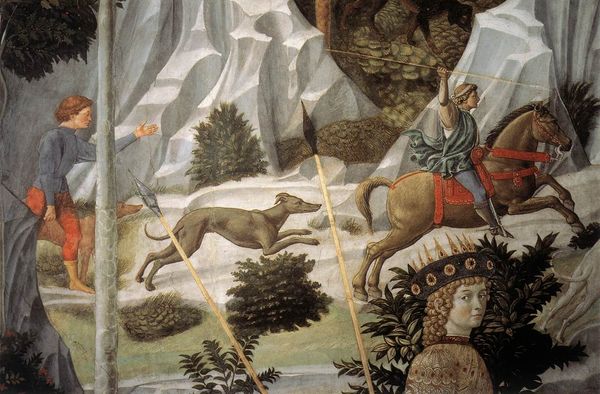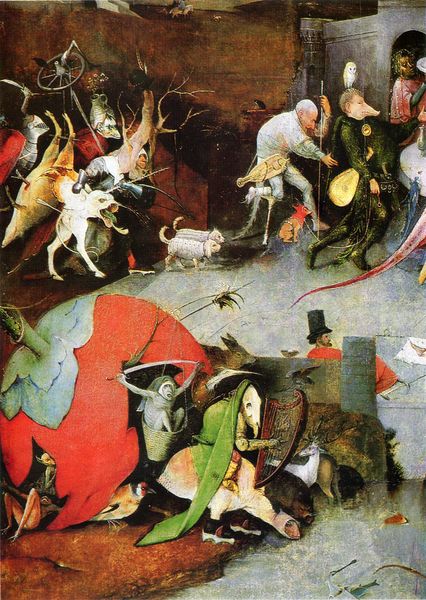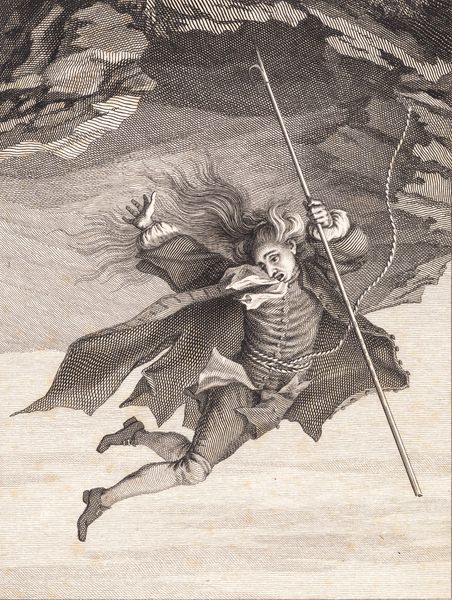
tempera, painting
#
medieval
#
narrative-art
#
fantasy art
#
tempera
#
painting
#
fantasy-art
#
painted
#
figuration
#
italian-renaissance
Dimensions: 24 x 39 cm
Copyright: Public domain
Editor: Here we have Il Sassetta’s "St Anthony the Hermit Tortured by the Devils," painted in tempera around 1423. The first thing that strikes me is how unsettling but also rather theatrical it feels. It's almost comical in its depiction of the demonic. How do you interpret this work? Curator: The theatricality, as you call it, isn't accidental. Consider how potent these images were for the people of the early Renaissance. Saints, especially anchorites like St. Anthony, became symbolic battlegrounds for spiritual warfare. His temptations weren't just personal trials, they mirrored the struggles within the broader Christian world. What do you notice about the depiction of the devils themselves? Editor: Well, they’re grotesque, sure. Furry bodies, animalistic features…but their expressions seem almost…silly? Is that intentional, to diminish their power? Curator: Precisely. This speaks volumes about the function of imagery during the medieval period transitioning into the Renaissance. The demons, although visually monstrous, are being tamed, psychologically. They are made almost farcical. Their power is lessened. This gives the Saint – and the viewer – a sense of triumph, a visual reassurance of faith's strength over the perceived evils threatening the social and spiritual order. What about St. Anthony himself? What impression does he convey? Editor: He seems stoic, almost resigned. He’s not fighting back, just enduring. Curator: Indeed. This image isn't about physical combat, but the strength of spiritual resolve. It visualizes psychological struggle, faith tested to its limits, which mirrors internal conflicts faced by society itself at that time. Editor: It’s interesting how this painting captures that feeling. The devils may seem absurd now, but thinking about their symbolic role back then provides another way of seeing it. Curator: Exactly. Visual symbols act as powerful mirrors, reflecting and shaping a culture’s anxieties and aspirations.
Comments
No comments
Be the first to comment and join the conversation on the ultimate creative platform.
